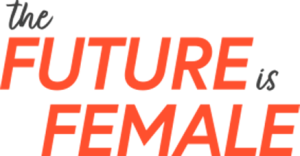Women’s Health

is an initiative that aims to disrupt the status quo by elevating topics that impact millions of women.
Women’s voices matter and it’s time to shine a light on these common yet inadequately discussed issues.
Women are #1 Health Care Decision-Makers
Women often juggle many aspects of life simultaneously, including tackling a job, running a household, supporting friends, and caring for loved ones. In fact, one survey found that women are overwhelmingly the ones making important health care decisions for themselves, their children, significant others, and many times their parents or other family members.3
Some other interesting stats from the
On the Rebound: What to Expect after Surgery survey, include:3

Women will face a variety of challenges when it comes to their own health
Opioid Use in Women
Despite the desire to get back to daily life, 67% of women3 surveyed took an opioid to manage pain after surgery, which can negatively impact recovery. For example,
 Opioids can cause nausea, vomiting, and constipation5
Opioids can cause nausea, vomiting, and constipation5 Opioids can delay how quickly you return to day-to-day activities5
Opioids can delay how quickly you return to day-to-day activities5 Opioids can lead to dependency or, if left around the house, can pose a potential risk of misuse and abuse by others5
Opioids can lead to dependency or, if left around the house, can pose a potential risk of misuse and abuse by others5
Hear from real-life doctors and patients
on how non-opioid options helped achieve an enhanced recovery experience.
For more information on a safe and effective non-opioid option
Regaining Intimacy After Cancer
Understanding Pelvic Pain and Sexual Dysfunction
Learn more about ways we can work together
References
- 1 Dow K. Looking into the Test Tube: The Birth of IVF on British Television. Med Hist. 2019 Apr;63(2):189-208. doi: 10.1017/mdh.2019.6. PMID: 30912501; PMCID: PMC6434648.
- 2 Hurst JH. Pioneering geneticist Mary-Claire King receives the 2014 Lasker~Koshland Special Achievement Award in Medical Science. J Clin Invest. 2014 Oct;124(10):4148-51. doi: 10.1172/JCI78507. Epub 2014 Sep 8. PMID: 25196046; PMCID: PMC4191015.
- 3 Pacira BioSciences, Inc. On the Rebound: What to Expect after Surgery. July 2020. [Analysis in the report was based on research conducted by Wakefield Research.]
- 4 Pacira BioSciences, Inc. Exposing A Silent Gateway to Persistent Opioid Use: A Choices Matter Status Report. October 2018. [Analysis in the report was based on research conducted by IQVIA Institute for Human Data Science (formerly QuintilesIMS).]
- 5 Tong J Gan. Poorly controlled postoperative pain: prevalence, consequences, and prevention. September 2017. [Journal of Pain Research.]
- 6 Wettergren L, Eriksson LE, Bergström C, Hedman C, Ahlgren J, Smedby KE, Hellman K, Henriksson R, Lampic C. Prevalence and risk factors for sexual dysfunction in young women following a cancer diagnosis – a population-based study. Acta Oncol. 2022 Sep 29:1-8. doi: 10.1080/0284186X.2022.2112283. Epub ahead of print. PMID: 36176069.

 You are not alone. As many as
You are not alone. As many as  Over
Over  Step one is identifying the cause of the pain or discomfort as there could be several contributing factors.
Step one is identifying the cause of the pain or discomfort as there could be several contributing factors.